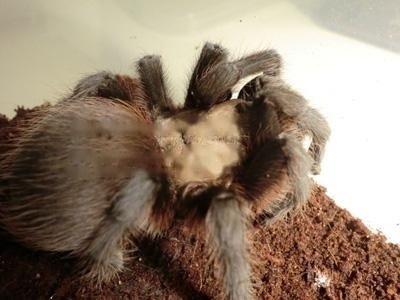
Texas Brown Tarantula
Adult body length is 13-14 cm, suitable temperature is 28-30 ℃, and suitable humidity is 65%. It is recommended to use moist peat, coconut brick and clay as the substrate. It tak
English name: Grammostola rosea
Personality: docile
Origin: South America
Lifetime: 1-3 years
Disease: Waste Disease
Fire roseSpider (Latin name: Grammostola rosea) also known as Chilean fire rose spider, native to Chile, is a species very similar to Chilean red roses, the main difference being that they look redder and their carapace is red instead of pink. However, they are less common than Chilean red roses. They were once considered to be red varieties of Chilean red roses, and share the Latin scientific name "Grammostola rosea" with Chilean red roses, but now European and American enthusiasts use "Grammostola porteri" to call Chilean red roses and recognize that they exist as two separate species.
Adult body length is 14-15 cm in foot span. The suitable temperature is 25-27°C and the suitable humidity is 50%. It is recommended to use relatively dry peat and coconut bricks as the substrate. Their larvae look exactly the same as those of the Chilean red rose, with no discernible difference. However, when the adult individual color is displayed above 6 cm, it can be found that they are more reddish, and the hair of Chilean red roses is more grayish white. However, the popularity of this species on the mainland is far less than that of Chilean red roses. Occasionally, their larvae can be seen for sale, but they are more expensive than Chilean red roses.
However, it should be noted that some businesses deliberately confuse the two and sell the larvae of red roses as larvae of fire roses. After all, there is no difference to the naked eye. Although the price is not much different, if you find that you have been deceived after carefully raising it for a year or a half, I believe it will not be a good feeling for enthusiasts.